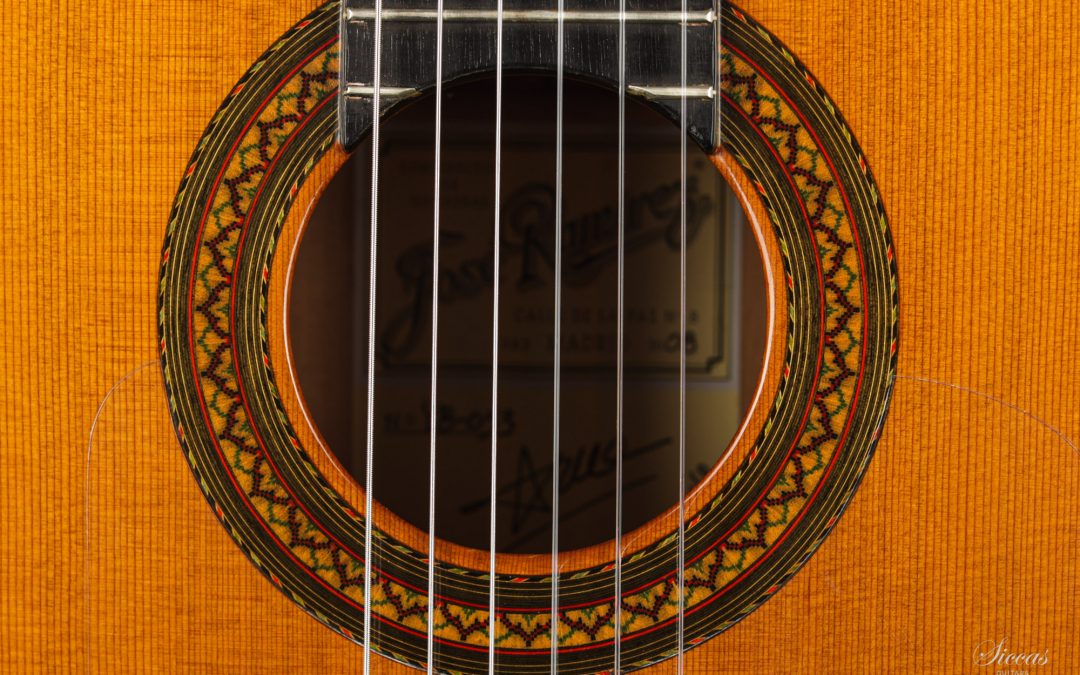
Andrés Segovia
Andrés Segovia
Andrés Segovia Torres, 1st Marquis of Salobreña (February 21, 1893 – June 2, 1987), known as Andrés Segovia, was a virtuosic Spanish classical guitarist from Linares, Spain. Many professional classical guitarists today were either students of Segovia or students of his students. Segovia’s contribution to the modern-romantic repertoire included not only commissioned compositions but also his own transcriptions of classical and baroque works. He is remembered for his expressive performances: his broad tonal palette and his distinctive musical personality, phrasing, and style.
Early Life
Segovia was born on February 21, 1893, in Linares, Jaén, Spain. At a very young age, he was sent to live with his uncle Eduardo and his aunt María. Eduardo arranged Segovia’s first music lessons with a violin teacher after recognizing that Segovia had a gift for music. For the young Segovia, however, this turned out to be an unfortunate introduction due to the teacher’s harsh methods, and Eduardo ended the lessons. His uncle decided to move to Granada to give Segovia a better education; upon arriving in Granada, Segovia resumed his musical studies. He was aware of flamenco during his formative years but declared that he had “no taste” for the style, choosing instead the works of Fernando Sor, Francisco Tárrega, and other classical composers. Tárrega had agreed to give the self-taught Segovia a few lessons but died before they could meet, and Segovia later stated that his early musical education combined the “dual function of professor and student in one body.”
First Performances and Career Beginnings
Segovia’s first public performance was in 1909, at the age of 16, in Granada. A few years later, he gave his first professional concert in Madrid, which included works by Francisco Tárrega and his own guitar transcriptions of Johann Sebastian Bach. Despite discouragement from his family, who wanted him to become a lawyer, and criticism from some of Tárrega’s students for his unconventional technique, he pursued his guitar studies diligently.
He performed again in Madrid in 1912, at the Paris Conservatory in 1915, in Barcelona in 1916, and embarked on a successful South American tour in 1919. Segovia’s arrival on the international stage coincided with the revival of the guitar as a concert instrument, largely through the efforts of Miguel Llobet. In this changing milieu, Segovia, thanks to his strong personality and artistry combined with developments in recording and broadcasting, succeeded in popularizing the guitar once again.
Encounters with Composers
In 1921 Segovia met Alexandre Tansman in Paris, who later wrote a series of guitar works for him, including Cavatina, which won a prize at the International Composition Competition in Siena in 1952.
In Granada in 1922, he was associated with the Concurso de Cante Jondo, promoted by Spanish composer Manuel de Falla. Although Segovia had already developed as a flamenco player, his direction was now classical. Invited to open the contest at the Alhambra, he performed Falla’s Homenaje a Debussy.
In 1923 he visited Mexico, where Manuel Ponce, impressed by his concert, began composing many works for Segovia. Later, in 1932, he met Mario Castelnuovo-Tedesco, who went on to compose a large number of works for guitar, many dedicated to Segovia, including the Concerto Op. 99 (1939).
Relationship with Luthiers
In 1924 Segovia met German luthier Hermann Hauser Sr. in Munich. Hauser provided him with a guitar in 1928, which Segovia used during his U.S. tour until 1933. Later, Segovia ordered another Hauser guitar and passed the 1928 model to his U.S. representative Sophocles Papas, who gave it to Charlie Byrd, the jazz and classical guitarist, who used it on several recordings.
International Fame
Segovia’s first American tour was arranged in 1928. After his U.S. debut, Brazilian composer Heitor Villa-Lobos composed his Twelve Etudes and dedicated them to him. This relationship lasted for many years, and Villa-Lobos continued to write for Segovia.
By the 1930s and 40s, Segovia was performing extensively in South America and Europe. In 1935 he gave his first public performance of Bach’s Chaconne. After World War II he toured Europe and the United States regularly and recorded frequently.
Later Recognition
In 1954 Joaquín Rodrigo dedicated Fantasía para un gentilhombre to Segovia. In 1958 he won the Grammy Award for Best Classical Performance, Instrumentalist, for his recording Segovia Golden Jubilee.
John W. Duarte dedicated his English Suite Op. 31 to Segovia and his wife in 1962. In 1981 he was ennobled by King Juan Carlos I with the title Marquis of Salobreña.
Final Years
Segovia continued performing into his 70s and 80s while living in semi-retirement on the Costa del Sol. Two films were produced about his life at ages 75 and 84. In 1984, a 13-part NPR series titled Segovia! was broadcast internationally.
Segovia died on June 2, 1987, at the age of 94, in Madrid of a heart attack. He is buried in the Casa Museo de Linares in Andalusia.

















